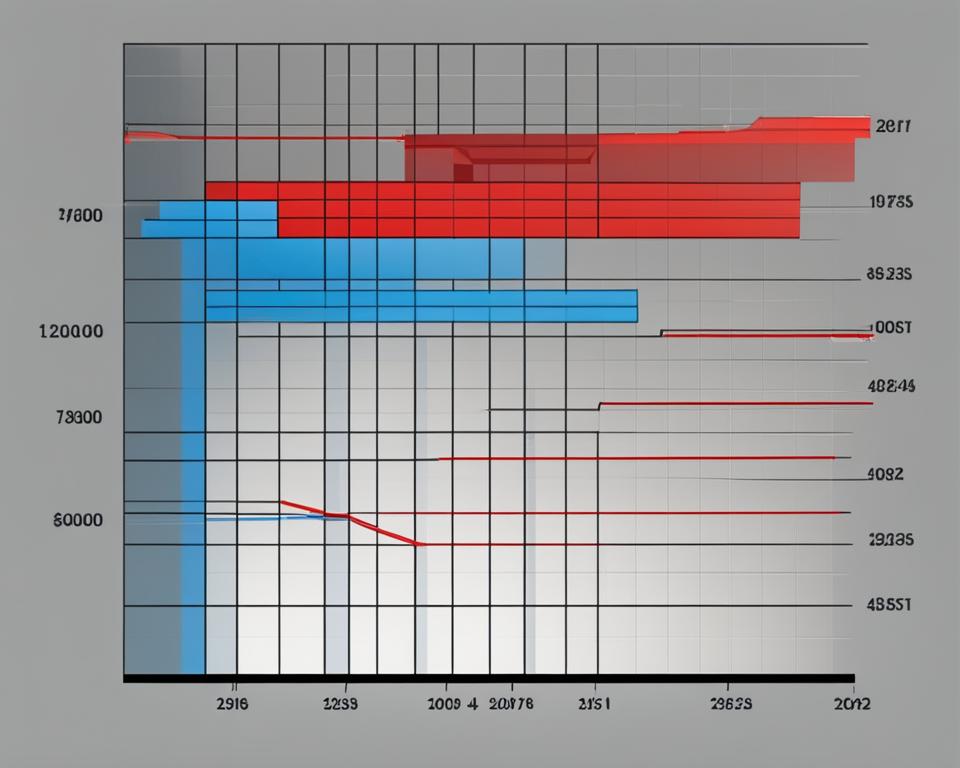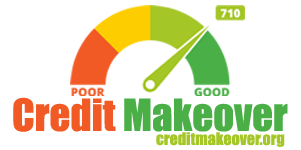In the realm of personal finance, debt consolidation stands out as a strategic move that can potentially streamline the journey toward debt freedom. This financial strategy involves the amalgamation of various debts into a singular loan or credit line, often securing a more favorable interest rate in the process. While consolidating debts may appear as an attractive route towards effective debt management, it necessitates a comprehensive analysis of an individual’s unique financial landscape. Embracing this financial strategy should come after evaluating potentially lower interest rates, lender fees, and the personal discipline required to avoid future debts.
Finding a path that aligns well with one’s financial goals is the essence of debt consolidation. As many grapple with complex debt situations, the allure of a single monthly payment and reduced interest rates can be compelling. However, a prudent approach to debt consolidation demands a thorough examination of all associated aspects, including the sustainability of repayment terms and the impact on credit scores.
Key Takeaways
- Debt consolidation can simplify debt management by combining multiple payments into one.
- Lower interest rates through consolidation can result in significant cost savings over time.
- Financial strategy should be chosen based on one’s ability to afford consistent payments.
- It is vital to compare consolidation options, such as personal loans and balance transfer credit cards.
- Long-term benefits of consolidating debts hinge on disciplined spending and strategic financial planning.
Understanding Debt Consolidation and Its Purpose
When the burden of multiple debts becomes a juggling act, a debt consolidation loan comes into play as a strategy designed to bring a semblance of peace to financial chaos. The essence of a debt consolidation loan is to consolidate manifold financial obligations into a unified, often more manageable, form. A common misconception is that debt consolidation inherently reduces debt, but its primary objective is to restructure the debt into a singular payment, perhaps with a reduced interest rate, thereby fashioning a more straightforward debt repayment strategy.
There are several consolidate debt options available, each with its distinct mechanisms and benefits:
- A personal loan is secured with a fixed payment period and interest rate, repurposing existing debt into one place to potentially lower monthly outgoings.
- Balance transfer credit cards offer an introductory 0% APR period, providing a window of opportunity to pay off accrued amounts without accumulating interest—assuming the debt is cleared within the introductory phase.
Debt consolidation can act as a catalyst to financial freedom when incorporated into an existing financial strategy with diligence, mindfulness, and an end goal that aligns with person-specific fiscal objectives.
Understanding the mechanics behind debt consolidation options is not just a matter of making payments simpler; it’s a way of life that requires a comprehensive repayment strategy aimed at debt reduction. To those wondering whether to tread this financial pathway, consider the long view—it’s essential to evaluate not only the immediate impact but also how it fits into a wider investment in your financial health.
What factors should I consider before consolidating my debts?
Embarking on debt consolidation demands a strategic approach that hinges on multiple crucial financial facets. To make an informed financial decision, scrutinizing your individual economic circumstances is imperative. It involves considering your financial goals, current repayment rate, and the overarching impact that income stability can have on the undertaking of a new credit commitment.
Assessing Your Current Financial Status
Initiating the debt consolidation process requires a deep dive into your present financial health. Scrutinize your consistent cash flow, dissect your debt stack, and gauge your current repayment capabilities. One of the standout debt consolidation benefits is finding a rhythm that aligns seamlessly with your regular earnings and outgoing expenses. This level of introspection is vital, particularly if you’re aiming to dodge the cycle of rebuilding debts after consolidating.
Understanding Debt Consolidation Loans vs. Balance Transfer Cards
When torn between a debt consolidation loan and balance transfer credit cards, weigh the pros and cons with respect to your financial landscape. A debt consolidation loan is typically accompanied by fixed interest rates and a structured debt payoff schedule. Conversely, balance transfer cards are lauded for their alluring introductory 0% APR offers, but require a diligent eye on the promotional period’s expiration, leaning into a strategic financial decision that could culminate in substantial saving on interest payments.
Calculating Interest Rates and Potential Savings
Assess the interest rates impact meticulously before sealing the deal. Comparing the rates you’re currently juggling against those proposed by debt consolidation options can illuminate the trajectory of potential savings. It’s not just about the immediate reduction in rates; the true advantage lies in the long-term interest cost curtailment, turning a debt consolidation loan into a formidable ally on your journey to financial peace.
Debt consolidation is not a one-size-fits-all solution; it’s a financial tool that demands thoughtful consideration. By analysing how each aspect—from income stability to the intricacies of interest rates influence—plays into your unique economic narrative, you position yourself to harness the full scope of debt consolidation’s fiscal potency.
Evaluating Your Debt Situation
When looking to improve your financial well-being, the first step is to conduct a thorough debt analysis. Examining your total debt balance, the types of debt you carry, and your debt-to-income ratio lays the foundation for smart debt management and a consolidated debt plan. A clear understanding of these factors is vital both for your credit score’s health and for crafting a strategy that aligns with your financial goals.
Tallying Your Total Debt
Begin by listing every obligation under your name—credit card balances, student loans, personal loans, and any other form of borrowed money must be included. This exercise provides insight into your total debt balance, offering a comprehensive view essential for assessing the feasibility of a debt consolidation plan.
Determining the Types of Debt You Have
Mortgages, student loans, auto loans, and credit card debts—each type of debt plays a distinct role in influencing your credit management decisions. Identifying these types helps in recognizing how each may affect your credit score and the impact they bear on overall financial health.
Checking Your Debt-to-Income Ratio
Your debt-to-income ratio is not just a number but a financial health indicator. It’s calculated by dividing your monthly debt payments by your gross monthly income, reflecting your ability to manage monthly payments and potential to secure favorable consolidation terms.
In applying these measures and committing to tracking these financial indicators, you lay the groundwork for a financial turnaround. The culmination of this information will guide you in devising a credit management plan that is informed, strategic, and conducive to long-term financial health.
Interest Rates and Their Impact on Debt Repayment
When considering consolidating debts, individuals often seek out options that offer reduced interest rates, as these rates are crucial to the cost-effectiveness of a debt repayment strategy. A common goal is to secure a single, lower rate that can considerably decrease the overall financial burden. A question arises: just how significant is the impact of interest rates on debt repayment? To illustrate this, let us examine the two scenarios where interest rates differ and their subsequent effects on the repayment process.
By consolidating multiple debts into one loan with a lower interest rate, you are not only simplifying your financial obligations but potentially reducing the total amount you will pay over the life of the loan.
High interest rates can be particularly crippling for debts such as credit card balances, where compounded interest adds up quickly, increasing the overall sum to be repaid. Conversely, a lower interest rate obtained through debt consolidation can shorten the repayment timeline and, equally important, result in substantial savings.
| Scenario | Interest Rate | Monthly Payment | Total Interest Paid | Repayment Period |
|---|---|---|---|---|
| Before Consolidation | 20% | $600 | $2,400 | 24 months |
| After Consolidation | 10% | $550 | $1,200 | 20 months |
The table above shows that halving the interest rate in this hypothetical scenario also reduces the total interest paid and shortens the time necessary to become debt-free. It is evident that even a modest reduction in interest rates can significantly affect the total financial outlay and the pace at which debts can be resolved.
However, it is critical to approach consolidating debts with a sound strategy in place. One should consider not only the interest rates but also the loan terms, repayment capacity, and any additional fees or charges associated with the consolidation process. It is by considering these interconnected factors that one can construct an effective debt repayment plan.

In summary, the influence of interest rates on the expense and duration of debt repayment cannot be understated. For those navigating the complexities of debt, a thoughtful approach to consolidating debts — one that seeks a balance between manageable payments and minimal interest costs — can go a long way towards achieving financial stability and peace of mind.
The Effects of Consolidating on Your Credit Score
Merging debts into a single obligation can create waves in an individual’s credit standing. While some may be concerned about the credit score impact, understanding the debt consolidation effects and adapting one’s financial behavior can mitigate risks and ultimately pave the way for credit score betterment. This section navigates through the complexities of strategic debt repayment, minimizing risk, and building a stronger credit foundation through credit rebuilding and financial discipline.
How Debt Consolidation Affects Credit
Debt consolidation potentially initiates a slight dip in credit scores due to hard inquiries from new credit applications. However, it can also lead to positive outcomes. This financial move can replace multiple debt accounts with one, possibly changing the credit utilization ratio, which is a significant factor in credit scoring algorithms. Over time, with consistent debt management, consolidation can become a testament to one’s reliable financial stewardship.
Strategies to Minimize Negative Impact
For those actively managing their credit status, here are some astute strategies to help ensure that consolidating debt won’t significantly harm your credit score:
- Keep older accounts open to maintain a longstanding credit history.
- Avoid taking on new debt, to keep the credit utilization stable.
- Make more than the minimum payments whenever feasible to reduce balances rapidly.
This strategic approach emphasizes the importance of not only managing current debt but also of planning for a healthy credit future.
Rebuilding Credit Post-Consolidation
The path to credit rebuilding post-consolidation requires patience and commitment. Establishing a pattern of on-time payments is vital for a rebound. Avoid overextending credit facilities and focus intently on staying within budget. These practices demonstrate financial discipline and highlight an individual’s reliability to potential lenders, contributing to an upward trajectory of one’s credit score.
For visual illustration, examine the following comparative table that outlines the phases and impact points in the credit score journey:
| Phase | Initial Credit Impact | Mid-Term Credit Impact | Long-Term Credit Impact |
|---|---|---|---|
| Consolidation Initiation | Potential temporary dip from credit inquiry | Improvement as debt-to-credit ratio stabilizes | Probable credit score increase with consistent repayment |
| Strategic Repayment | Low impact, but subject to financial behavior | Reduction in owed amounts begins to reflect positively | Significant uplift in creditworthiness |
| Credit Rebuilding | Minimal immediate effect | Credit utilization and history begin to enrich credit score | Established record of financial discipline solidifies high credit status |
Exploring Debt Consolidation Loan Options
When considering the path to financial relief, many turn to a debt consolidation loan as a viable financial solution. This strategy can simplify your monthly payments and potentially reduce the overall cost of debt. As you explore your lender options, it’s imperative to compare the varied terms offered by banks, credit unions, and online lenders. Each can play a pivotal role in your journey toward a healthier financial state. By scrutinizing the details of each offer, borrowers are better equipped to select a loan that complements their specific circumstances and fosters debt management success.
| Lender Type | Interest Rates | Fees | Repayment Terms |
|---|---|---|---|
| Banks | Variable, may depend on credit score | Origination fees, potential prepayment penalties | Fixed and flexible options available |
| Credit Unions | Often lower, beneficial for members | Lower to none, depending on credit union policies | May offer more negotiable terms |
| Online Lenders | Competitive, sometimes lower than traditional banks | May include origination or service fees | Typically fixed, clear timelines for debt payoff |
Each lending institution extends unique advantages; for instance, a credit union often caters to its members with more favorable interest rates and terms. On the contrary, online lenders might present a competitive edge with typically lower rates and a streamlined application process. Banks, while potentially more stringent with their rates, offer reliability and comprehensive service. To determine which debt consolidation loan is the most advantageous, one must consider their current financial situation against the backdrop of these diverse options. Weighing these variables diligently will illuminate the most cost-effective route towards uniting debts under a single manageable umbrella.
Understanding Terms and Conditions of Debt Consolidation
When considering a move towards debt consolidation, it is crucial to gain a clear understanding of all associated terms and conditions. This includes grasping the specifics of loan terms, acknowledging possible loan fees and any prepayment penalties, as well as evaluating the intricacies of a debt repayment plan. These factors play a defining role in upholding fiscal responsibility and executing a sound loan management and financial planning strategy.
Loan Repayment Terms
Loan repayment terms dictate the longevity of the debt repayment plan. It’s the joint presence of the loan duration, monthly payment schedule, and the interest rate that form the backbone of your consolidated loan. Opting for shorter loan terms may result in higher monthly payments; however, it also means a smaller total payout in interest. Conversely, elongating the term can ease monthly payments but accumulate more interest over time, swelling the overall debt settlement costs.
Fees and Penalties
Understanding the fees and penalties that accompany a debt consolidation loan is key to minimizing additional costs. Origination fees or application charges can add overhead to your loan, while prepayment penalties may dissuade you from settling debts ahead of schedule. These costs can significantly affect the net benefit derived from consolidating your debts, so addressing them is a prime component of effective loan management.
Prepayment Benefits and Pitfalls
Those aiming for a prepayment strategy should be aware of both its potential benefits and downsides. While prepayment can lead to interest savings and shorten the timeline to debt freedom, some lenders discourage it by imposing penalties. It is vital to ascertain whether your lender encourages early payoff without extra charges to maximize the benefits of your financial planning efforts.
The Role of Personal Financial Goals in Debt Consolidation
Understanding the influential role of personal financial goals within the realm of strategic debt consolidation is paramount to crafting a robust financial plan. Aligning debt consolidation strategies with individual aspirations not only simplifies the process but also catalyzes the fulfillment of specific financial benchmarks. Whether one’s ambitions lean toward maximizing savings on interest payments, adjusting monthly disbursements for improved cash flow, or rapidly diminishing outstanding balances, each objective molds the consolidation path distinctively.

Strategic debt consolidation is more than a mere transaction; it is a financial planning tool sculpted by one’s personal economic goals. Identifying these targets steers the approach, ensuring that the consolidation process becomes a tailored journey rather than a one-size-fits-all solution. The various methods employed to consolidate debts—from rolling multiple balances into one low-interest loan to utilizing balance transfer credit cards—offer different advantages fine-tuned for specific outcomes.
For those aiming to minimize interest expenditures, converting multiple high-interest liabilities into a single loan with a lower rate can translate into remarkable long-term savings. Conversely, individuals striving for greater liquidity may find solace in reduced monthly payments, a benefit that frees up cash for other essential expenses or savings. Meanwhile, motivated debtors who prioritize speed may leverage strategic debt consolidation structures to expedite the extinguishment of their financial encumbrances.
- Lower interest rates lead to cost savings over time.
- Consolidated monthly payments enhance cash flow management.
- Accelerated debt repayment timelines encourage quicker financial liberation.
Thus, intertwining one’s personal financial goals with a well-crafted consolidation plan potentiates the achievement of a more stable financial future. It underscores the importance of diligently analyzing one’s own financial picture and consolidating debt in a way that not only addresses immediate needs but also fortifies long-term financial well-being.
Remember, the most efficient consolidation strategy is one that resonates deeply with your personal financial roadmap.
Comparing Balance Transfer Credit Cards to Loans
When considering debt reduction strategies, it’s important to compare 0% APR balance transfer credit cards with traditional loans. The right choice can significantly affect your debt consolidation strategy, potentially saving you money and accelerating your path to financial freedom.
0% APR Offers and Their Duration
Many balance transfer credit cards feature introductory 0% APR offers that can last from a few months up to a year or more. This period is crucial, as it allows consumers to pay off their balance without accruing interest, making it an attractive debt consolidation option. A cost analysis should include a review of the offer’s duration to ensure it aligns with your ability to repay the full balance within this time frame. Maximizing the benefits of these introductory rates is at the core of effective credit card strategies for debt reduction.
Balance Transfer Fees and Calculations
One must not overlook balance transfer fees when electing to utilize these credit cards. These fees typically range from 3% to 5% of the transferred amount and can influence the overall savings potential. Assessing these fees is necessary to ensure that the cost does not outweigh the benefits of the interest saved during the introductory period.
Making the Most of Introductory Rates
Making the most of the introductory rates involves a methodical debt consolidation strategy. It’s advisable to create a payment plan that distributes your debt into manageable monthly payments, ensuring complete payoff before the 0% APR period ends. Utilizing this approach can lead to significant debt reduction without the burden of high-interest rates.
| Consolidation Method | Duration | Cost Analysis | Debt Reduction Potential |
|---|---|---|---|
| 0% APR Balance Transfer Card | 6 – 21 months | Balance Transfer Fee vs. Interest Savings | High if paid within intro period |
| Consolidation Loan | Varies | Loan Interest Rate vs. Current Debt Rates | Dependent on interest rate and loan terms |
Through careful balance transfer fees consideration and a solid repayment plan, balance transfer credit cards can be powerful instruments in your debt consolidation toolkit. However, it’s vital to conduct a thorough cost analysis to ensure that these options align with your financial goals and capabilities.
Assessing Your Spending Habits and Budget
Before embarking on the journey of debt consolidation, a critical analysis of your spending habits serves as the foundational step. By understanding where your money goes each month, you create a launching pad towards effective budget assessment and ensure debt consolidation readiness. This process not only positions you for a more informed decision-making pathway but also fortifies your financial discipline for the post-consolidation phase.
Analyzing your financial transactions over the last few months allows for a vivid mapping of your earning vs. spending flow, highlighting areas that may require tightening or reallocation. Categorizing expenses into essential and discretionary spending gives you a clear picture of where reductions can be made to support your debt consolidation efforts.
To help synthesize this information, a simplistic budget table can be created, encapsulating the different segments of expenditure vs. income:
| Income Sources | Fixed Expenses | Variable Expenses |
|---|---|---|
| Salary | Mortgage/Rent | Groceries |
| Investments | Car Payment | Entertainment |
| Additional Income | Insurance | Dining Out |
By leveraging such a visual breakdown, it becomes evident which costs are mere wants versus genuine needs. Aligning a new, realistic budget means establishing a barrier against the accumulation of future debts, a pivotal step in confirming your readiness for debt consolidation.
“A budget is more than just a series of numbers on a page; it is an embodiment of our values.” – Barack Obama
The essence of a well-designed budget resonates with former President Obama’s viewpoint; it goes beyond the mere act of balancing figures. It requires a thoughtful assessment of one’s values and a strategic alignment of financial resources towards achieving a debt-free life.
- Review and categorize past spending.
- Identify flexible expenditures for adjustment.
- Devise a realistic budget aligning with long-term financial goals.
- Enforce confirmed budget as a conscientious approach to spending.
In conclusion, taking the time to extensively analyze and adjust your spending habits and formulate a strict yet adaptable budget assessment establishes the groundwork for a successful debt consolidation strategy.
Pros and Cons of Debt Management Plans
When exploring financial relief options, many individuals come across debt management plans (DMPs) offered by nonprofit credit counseling agencies. These plans are specifically designed to provide debt management support and include a multifaceted approach that involves financial education, practical debt repayment strategies, and an aim to reduce debt burdens through interest reduction and fee waivers. However, like any financial plan, DMPs come with their own sets of advantages and drawbacks.
Benefits of Nonprofit Credit Counseling
Through nonprofit credit counseling services, individuals receive comprehensive guidance with the benefit of learning to manage their finances more effectively. Counselors work alongside clients to negotiate credit terms with lenders, often securing more favorable repayment conditions. For many, the educational aspect of counseling is just as valuable as the financial relief it provides.
How a DMP Affects Credit Utilization and Repayment
A well-implemented DMP can have a positive effect on an individual’s credit utilization ratio. As multiple debts are consolidated into a single payment plan, credit utilization can gradually decrease, which may positively influence credit scores. Consistent, on-time payments further demonstrate financial reliability to creditors.
Qualifying for Interest Reduction and Fee Waivers
One of the primary advantages of a DMP is the potential to reduce overall debt through lowered interest rates and waived fees. Such reductions, however, are not guaranteed and tend to depend on individual circumstances and the willingness of creditors to negotiate. It’s important for enrollees to recognize their ability to potentially qualify for these benefits.
| Aspect | Advantage | Consideration |
|---|---|---|
| Nonprofit Credit Counseling | Expert financial education and support | Requires time commitment for counseling sessions |
| Credit Utilization | Can improve over time with consistent payments | Initial impact on credit score due to closing of accounts |
| Interest and Fees | Potential reduction in interest rates and waiving of fees | Not all creditors may agree to concessions |
| Repayment Terms | Simplified single monthly payment | May extend the debt repayment period |
Identifying Red Flags and Avoiding Debt Consolidation Scams
In the realm of personal finance, the threat of debt consolidation scams looms for unsuspecting individuals seeking relief from their fiscal burdens. Recognizing the red flags associated with these predatory practices is a vital step towards safeguarding one’s financial integrity and ensuring robust consumer protection. The hallmarks of financial fraud in the guise of debt relief can often be identified by an insistence on upfront fees, the promise of guaranteed loan approvals irrespective of credit status, or by lenders who fail to perform due diligence on a borrower’s financial situation.
Proactive consumer vigilance involves a meticulous vetting process of potential lenders. This entails thoroughly researching the company history, reading trusted consumer reviews, and verifying the lender’s credentials with relevant financial authorities. Such preventative measures can be an effective bulwark against the monetary pitfalls fashioned by deceptive entities.

To enhance consumer awareness, the following table delineates common warning signs to watch for and protective actions to take against debt consolidation scams:
| Warning Sign | Protective Action |
|---|---|
| Unsolicited loan offers received via email or phone | Deliberately seek out reputable lenders and disregard unsolicited offers |
| Lack of detailed documentation or contracts | Request all agreements in writing and review terms carefully |
| Requests for personal financial information upfront | Only share personal data once a lender’s legitimacy is confirmed |
| Pressure to act immediately on a debt consolidation offer | Take the time to consider all options and consult with a financial advisor |
| Guarantees of debt reduction or elimination | Remain skeptical of unrealistic promises and seek second opinions |
| Charging fees before rendering services | Understand that reputable lenders do not require payment upfront |
Ultimately, the key to circumventing the perils associated with debt consolidation scams lies in an individual’s informed prudence and the recourse to legitimate financial counseling services. By elucidating the characteristics of fraudulent activities and promoting educated financial decision-making, consumers can confidently navigate the path towards debt consolidation.
Choosing a Lender for Debt Consolidation
When embarking on the journey of debt consolidation, selecting the right lender is as crucial as the terms of the loan itself. A lender’s reputation in the financial industry can greatly influence the borrower’s experience and the outcome of their debt consolidation plan.
Reputation and Credibility of Lenders
Before making any informed decisions, it’s essential to research a lender’s financial credibility. Be it credit unions, banks, or reputable online financial service providers, each has its own set of advantages. A lender’s history in granting financial deals is indicative of its reliability and operational integrity. Conducting a thorough loan service evaluation helps ensure that borrowers are entrusting their financial futures to institutions worthy of managing their consolidated debts.
Shopping Around for the Best Rates
The process of loan shopping should never be rushed. Taking the time to compare competitive interest rates across the market can yield substantial savings over the life of a debt consolidation loan. Potential borrowers should scrutinize loan offers, looking beyond the surface to assess any hidden charges that could affect the loan’s cost-effectiveness.
Reading Customer Reviews and Complaints
Consumer feedback is a treasure trove of insights, illustrating the customer experience with various lenders. Reading through reviews and complaints provides a candid look into each lender’s customer service and problem-solving capabilities. Websites such as the Better Business Bureau or Consumer Financial Protection Bureau aggregate such feedback, delivering transparency to guide borrowers in their selection process.
In conclusion, finding the right lender for debt consolidation is a multi-faceted task. It demands due diligence on the consumer’s part, ensuring their financial future is securely placed with a lender that offers not only competitive rates but a strong foundation of trust and customer satisfaction.
Long-Term Impact of Consolidating Your Debts
The prospect of debt consolidation carries with it the potential for profound change on an individual’s financial journey. Critical to this transformative process is the debt consolidation impact, which, when leveraged correctly, can set a course toward lasting debt freedom and stability. This transition not only hinges on the immediate relief of simplifying multiple debt payments but also plants the seeds for robust long-term financial planning.
A pivotal advantage of debt consolidation is the opportunity for interest savings. This cost-effective strategy can translate into lower monthly payments, releasing funds that can be channeled into savings or investments, fostering growth in a consumer’s financial portfolio. As a result, this strategic move has the capacity to positively shift an individual’s entire economic landscape.
To visually represent the impact of consolidation on a long-term scale, consider the following table, which illustrates the potential evolution of an individual’s debt scenario pre and post-consolidation:
| Aspect | Pre-Consolidation | Post-Consolidation |
|---|---|---|
| Number of Debt Accounts | Multiple | Single |
| Repayment Terms | Varied | Uniform |
| Total Interest Over Time | Higher Due to Different Rates | Lowered Through Negotiated Rate |
| Monthly Payments | Fluctuating | Consistent |
| Financial Stress | Elevated Due to Complexity | Reduced from Simplification |
However, the journey towards debt freedom does not end with the act of consolidating debts. It continues with a steadfast commitment to repayment without accumulating additional loans. The tableau of an individual’s finances post-consolidation should be marked by disciplined budgeting, strategic savings, and a honed focus on forward-thinking fiscal practices.
For those who navigate it with diligence and prudence, debt consolidation is not merely a lifeline; it is a rudder steering them away from the tumultuous seas of financial uncertainty towards the calm waters of debt freedom and empowerment.
Creating a Sustainable Debt Repayment Strategy
Embarking on a journey toward financial security often begins with the establishment of a well-structured debt management strategy. Achieving this requires a combination of realistic repayment goals, the creation of an emergency fund, and a staunch commitment to fiscal responsibility. It’s not just about making payments; it’s about instituting a sustainable framework for financial conduct that will ward off the future accumulation of debt.
Setting Realistic Repayment Goals
Realistic repayment goals are the cornerstone of any effective debt management strategy. These targets should be tailored to coincide with one’s financial capacity, taking into account other essential obligations and living expenses. Setting goals that are too aggressive may lead to frustration and the potential derailing of a repayment plan, while too lenient timelines could accrue additional interest, slowing down the path to debt freedom.
Building an Emergency Fund to Prevent Future Debt
Forming an emergency fund offers an additional layer of financial security, acting as a safeguard against unforeseen expenses that might otherwise lead to new debt. This preventive measure is a key part of avoiding the pitfalls that can disrupt a well-planned debt management strategy. By incrementally building this fund, individuals can ensure that they have the resources available to handle emergencies without undermining their fiscal responsibilities.
Maintaining Financial Discipline and Avoiding New Debt
Adherence to strict financial discipline is imperative for preventing debt in the long term. This means creating and sticking to a budget that accommodates debt repayment while avoiding the accumulation of new debt. Monitoring spending, recognizing needs versus wants, and prioritizing financial objectives are all crucial practices that contribute to lasting financial stability and the avoidance of further financial liabilities.
| Financial Objective | Strategy | Implementation |
|---|---|---|
| Debt Repayment | Create a targeted repayment plan with milestones | Direct extra income towards highest-interest debt first |
| Emergency Fund | Save a portion of monthly income for unexpected expenses | Automatically transfer funds to a dedicated savings account |
| Financial Discipline | Live within means and avoid unnecessary spending | Review and adjust budget regularly to align with financial goals |
Conclusion
As we wrap up this comprehensive examination of debt consolidation, it’s imperative to revisit the financial insights gleaned from our discussions. The journey through the various considerations of successful consolidation has shown that this financial strategy is not a one-size-fits-all solution. To achieve effective debt management, individuals must embark on a meticulous financial analysis of their unique circumstances.
Reviewing Key Takeaways
Key takeaways emphasize the critical nature of comprehending all terms, meticulously assessing one’s financial status, and confirming that the chosen path of consolidation is in harmony with personal economic ambitions. Through our debt consolidation review, it is abundantly clear that an informed approach—taking into account interest rates, associated fees, and the influence on credit scores—is paramount in selecting a lender that’s both credible and beneficial for the borrower’s situation.
Final Considerations for Effective Debt Consolidation
The final considerations for consolidating debts lay the groundwork for a transition toward lower interest rates and simplified repayment processes, ensuring alignment with a thoughtful and strategically laid financial plan. The decision to move forward with consolidation must be anchored in a comprehensive evaluation and built upon a foundation tailored to individual levels of debt and fiscal objectives.
Next Steps Toward Financial Freedom
The financial freedom journey may begin with the decision to consolidate, but it continues with disciplined execution of the subsequent steps. Crafting a feasible debt repayment strategy, adhering to a budget, and where necessary, leveraging financial counseling are essential moves toward financial independence. By effectively managing debts and precluding further indebtedness, individuals progressively advance on the path to a debt-free existence and the empowerment that comes with true financial autonomy.
FAQ
What should I consider before consolidating my debts?
Before consolidating your debts, consider your current financial status, including the regularity of your income, existing debts, and repayment capabilities. Evaluate the types of debt you have, your debt-to-income ratio, and whether consolidation aligns with your personal financial goals. Furthermore, assess the impact of the consolidation on your credit score and the interest rates and terms of potential consolidation loans or balance transfer credit cards.
What is the purpose of debt consolidation?
The purpose of debt consolidation is to simplify the repayment process by merging multiple debts into a single loan or balance transfer credit card, often resulting in a single monthly payment with a potentially lower interest rate. It can reduce the complexity and possibly the cost of managing existing debts.
How do I choose between a debt consolidation loan and a balance transfer credit card?
Choosing between a debt consolidation loan and a balance transfer credit card depends on the terms and benefits each option provides. Loans typically come with fixed interest rates and set repayment periods, offering a clear timeline for debt freedom. Balance transfer cards can have an introductory 0% APR for a limited time, which is beneficial if you can pay off the balance within this period. Consider the interest rates, loan terms, and fees before deciding.
How does debt consolidation affect my credit score?
Debt consolidation can initially impact your credit score due to credit inquiries and changes in account balances. However, making on-time payments on a consolidated loan or credit card can have a positive impact over time. Strategies such as keeping old accounts open can help minimize any negative effects on your credit score.
Are there any fees associated with debt consolidation?
Yes, there may be fees associated with debt consolidation, such as origination fees for a loan or balance transfer fees for a credit card. Additionally, some loans may have prepayment penalties. It’s important to understand these costs as they can affect the overall benefit of consolidating.
What are the long-term impacts of consolidating my debts?
The long-term impacts of consolidating debts include the potential for lower interest rates, a simplified repayment process, and possibly becoming debt-free sooner. Successful consolidation requires adherence to repayment plans and avoiding new loans. Over time, consistent financial behavior post-consolidation can result in improved credit standing and financial stability.
How can I avoid debt consolidation scams?
To avoid debt consolidation scams, be wary of upfront fees and guarantees of loan approval without a proper assessment. Research lenders carefully, read reviews, check credentials, and look for red flags such as high-pressure sales tactics or unclear terms. Consult with reputable financial advisors or use recognized financial institutions for consolidation services.
Should I keep my old credit accounts open after consolidating?
Yes, it’s generally recommended to keep old credit accounts open after consolidating. This helps to maintain your credit utilization ratio, which is beneficial for your credit score. However, it’s crucial to avoid accumulating new debt on those accounts.
What role do personal financial goals play in debt consolidation?
Personal financial goals are central to the debt consolidation process. Goals can include paying off debt quickly, reducing monthly payments, or saving on interest payments. Select the consolidation method and terms that best align with these goals to ensure that the strategy supports your overall financial objectives.
How can I create a sustainable debt repayment strategy after consolidating?
To create a sustainable debt repayment strategy, set realistic goals that align with your income and lifestyle, build an emergency fund to prevent future debt, and maintain financial discipline. Avoid acquiring new debt and adhere to a budget to reinforce your financial health in the long term.





